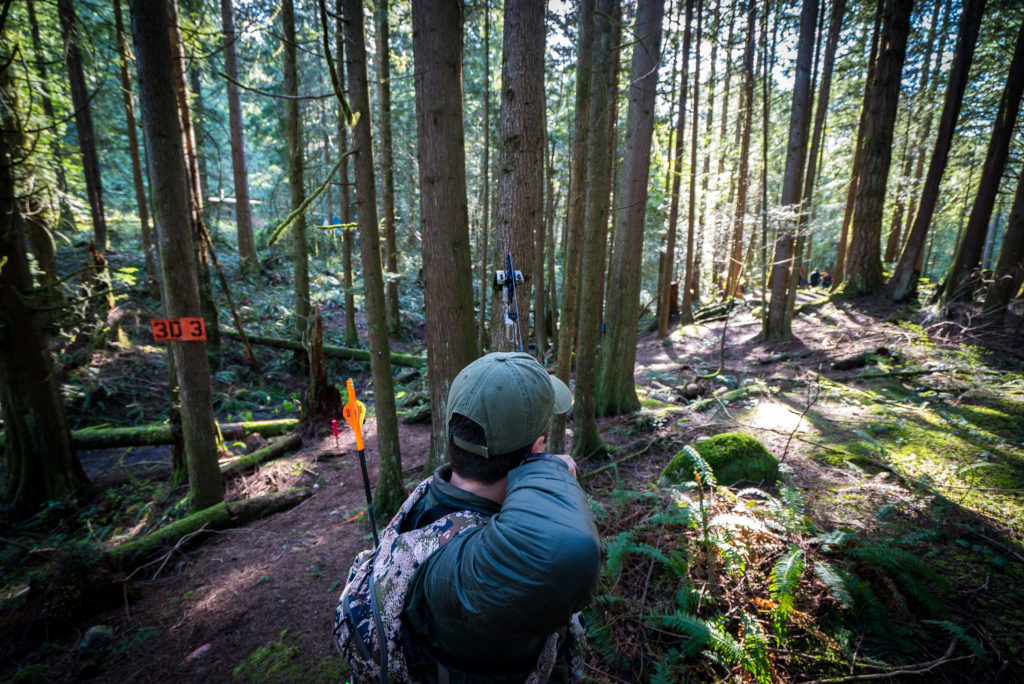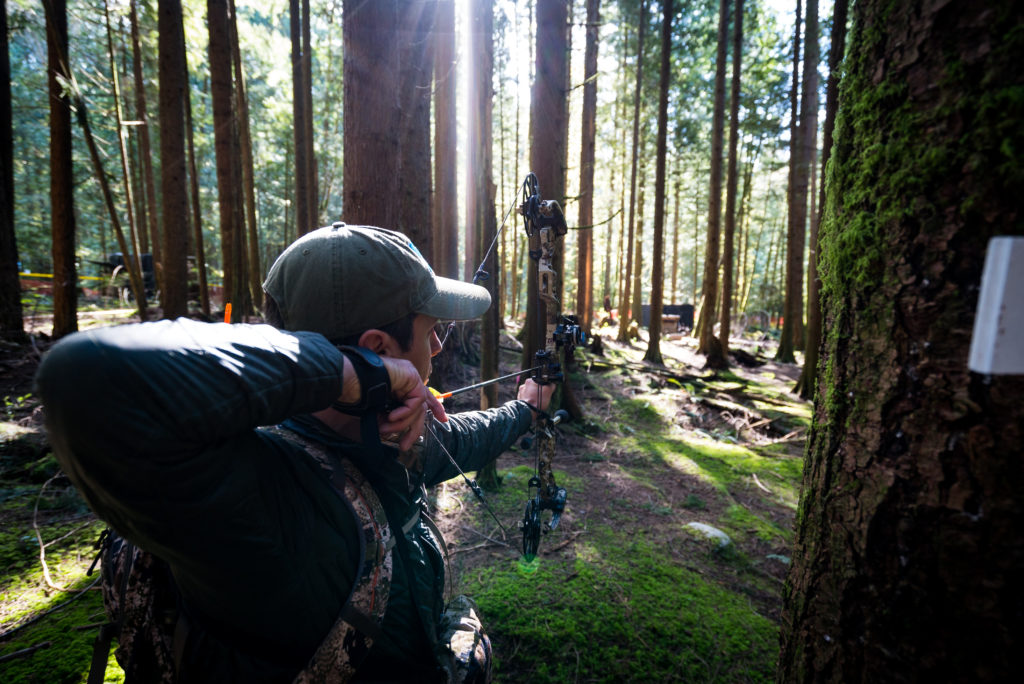With the mountains and trails still held tight in winter’s icy talons, I obliged to begin my new lease on archery at the only available indoor range in town. I figured significant change wouldn’t occur overnight, but taking the approach of one arrow at a time, I could begin to eventually see a gradual improvement. I was about to be proven wrong.
I stood outside the long, anonymous concrete building. The unassuming storefront construction reminded of my teenage boxing gyms exterior. Painted a mundane off-white, it could’ve been mistaken for something as exciting as a shipping and receiving department for paperclips. But much like the windowless, cinder-block building I frequented as a young fighter some fifteen years ago, there was a sense of wealth behind those doors. Not in the sense of a monetary measure, but a more intangible wealth. It was palatable in that old gym by the layer of grime on the canvas, the layers embedded with blood and sweat. Would the same wisdom hold true?

Fittingly enough, upon entering I was greeted by a salty older gentleman who’s physical characteristics and gruff inflection would bear a striking resemblance to Rocky Balboa’s old-timer trainer, Mick. Was it my overactive imagination? Either way, the quest had begun.
In my previous Journal of Mountain Hunting entry, Re-Tuned, I affirmed I’m a mountain archery hunter looking for answers. Though I consider myself an experienced bowhunter, I was and am ready to commit to upping the ante, as progress in the discipline is more of a journey — an evolution of sorts — than a final destination.
The aforementioned salty gentleman, who turned out to be the owner of the shop, was helping a target archer compare clarifiers in his peep. I walked to the range line, strapped on my release, nocked an arrow and drew my bow like I’d done tens of thousands of times before.
Seemingly before the first arrow landed slightly high and to the right of the bull the shop owner barked, “You hold that thing like a redneck. Are you a redneck, or an archer?”
I didn’t immediately give in to the fact that I was raised in a smaller rural southern Alberta town. Part of me thought the question was rhetorical. The other part secretly didn’t want to open my mouth and give him any more ammunition. He took my lack of response as an invitation and explained I gripped my bow too tightly, that I needed to seat the grip in the meat of my palm and splay my fingers broadly, rather than curling my fingers around the riser. I’d always been taught to have a loose grip on the bow, but it was never properly explained the way to anchor the grip to resist the temptation to act on the “grab reflex”. The gentleman instructed me to try again, this time with a proper grip. I cautiously obliged and eased the cams to roll over and steady at full draw. It felt odd, it felt new, but I knew this was part of the process I was searching for.
Fair warning: I’m not an expert in archery technique or a participant in the target archery world. But within seconds of my first shooting session, an overstepping coach couldn’t resist pausing his current lesson to correct my form. And I loved it. Could he see in my eyes that I was in search of archery enlightenment?
Over the next three or four arrows, he pointed out rapid-fire corrections via efficiently packed truth bombs.
“Open up your stance more, it will allow your left shoulder socket to be locked into a more consistent position of strength when anchored at full draw.” Wow, that feels better.
“Shorten that wrist strap release so that the trigger settles into the middle of your finger, rather than out by the tip.” Hmm a little odd, but I can get used to it.
“Think about gradually pulling your right elbow away from the bow as you execute the shot, rather than plunking the trigger.” Huh, I’d never thought of that.
The journey had begun, though I wasn’t really expecting to be taught so much so quickly. Nevertheless, I put a few of those practices into study. I shot arrows every night and watched as my groups tightened, taking a few notes after each session to reflect on my performance. I noticed that every so often I’d lose focus and let an errant arrow fly.
I visualized an upcoming trip to the Andes Mountains of Patagonia to chase free range red stag in the roar. A dream trip in a magical landscape — but still, I felt a slight twinge of unsureness when I thought about closing the distance on a big stag, eyes up and arrow nocked.
I recently read that two human core personality needs are the feeling of “certainty” and “uncertainty”, according to world-renowned motivational speaker Tony Robbins. Perhaps, it was the certainty in bowhunting that provides a rewarding and thrilling experience, but how exactly the experience — and result — is never determined, providing the uncertainty. An oversimplification most definitely, but perhaps this answered why bowhunting has been such a draw for me, it was a two-pronged need being fulfilled in my pursuit.

After the fledgling stages of the exploration, I’m lead to believe that the potential gains of addressing the technical and physical issues in my archery form, though not insignificant, could be dwarfed by the ability to harness the power of the mind. If it’s anything like the technique realizations I’ve made, I can’t wait to delve further.
Editor’s Note: Adam Foss is currently based out of Kelowna, BC and enjoys shooting arrows and learning from the team at Hardcore Archery.


